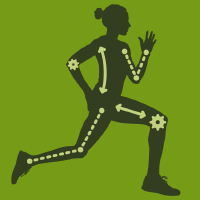Topic Editors


Endurance and Ultra-Endurance: Implications of Training, Recovery, Nutrition, and Technology on Performance and Health
Topic Information
Dear Colleagues,
We are continually searching for the optimal training methods to enhance endurance and ultra-endurance performance. However, we must consider that recovery plays an equal, or perhaps an even greater part in performance optimization, and consequently nutrition, sleep and technology all play vital roles. Although peak performance itself is an important goal, the use of exercise to improve health and increase longevity is also what many are striving for. Athletes are competing at a professional level at a much higher age than previously believed possible, and we are interested to learn what drives this positive change. We have begun using technology to measure and quantify most aspects related to training, performance, and health, and welcome the numerous benefits the use of technology for e-sports competition can bring. E-sports that require a physical output at the same level as traditional exercise are growing in popularity and technology that supports this new arena is advancing at a very fast rate. We are interested in new developments in technology supporting e-sports requiring physical efforts for sports such as cycling, rowing, and sailing. Therefore, the main objectives of this Special Issue are to highlight and examine new and optimal training and recovery methods for performance and health, and to examine the use of technology to track and quantify measures of performance and well-being.
Dr. Nicolas Berger
Dr. Russ Best
Topic Editors
Keywords
- determinants of endurance performance
- recovery strategies
- sports performance
- sports nutrition
- exercise to improve health
- effects of different types of training
- sleep
- sensor technology and application
- ultra-endurance
- sport science
- physical activity
- ageing
- fatigue monitoring
- sports supplements
- e-sports
Participating Journals
| Journal Name | Impact Factor | CiteScore | Launched Year | First Decision (median) | APC | |
|---|---|---|---|---|---|---|

Biomechanics
|
- | - | 2021 | 23.8 Days | CHF 1000 | Submit |

Healthcare
|
2.8 | 2.7 | 2013 | 19.5 Days | CHF 2700 | Submit |

International Journal of Environmental Research and Public Health
|
- | 5.4 | 2004 | 29.6 Days | CHF 2500 | Submit |

Nutrients
|
5.9 | 9.0 | 2009 | 14.5 Days | CHF 2900 | Submit |

Sports
|
2.7 | 5.2 | 2013 | 19.3 Days | CHF 1800 | Submit |

Sensors
|
3.9 | 6.8 | 2001 | 17 Days | CHF 2600 | Submit |

Muscles
|
- | - | 2022 | 20.8 Days | CHF 1000 | Submit |

Foods
|
5.2 | 5.8 | 2012 | 13.1 Days | CHF 2900 | Submit |

MDPI Topics is cooperating with Preprints.org and has built a direct connection between MDPI journals and Preprints.org. Authors are encouraged to enjoy the benefits by posting a preprint at Preprints.org prior to publication:
- Immediately share your ideas ahead of publication and establish your research priority;
- Protect your idea from being stolen with this time-stamped preprint article;
- Enhance the exposure and impact of your research;
- Receive feedback from your peers in advance;
- Have it indexed in Web of Science (Preprint Citation Index), Google Scholar, Crossref, SHARE, PrePubMed, Scilit and Europe PMC.

